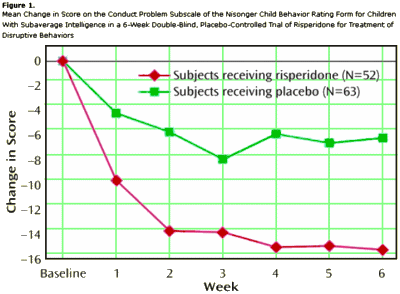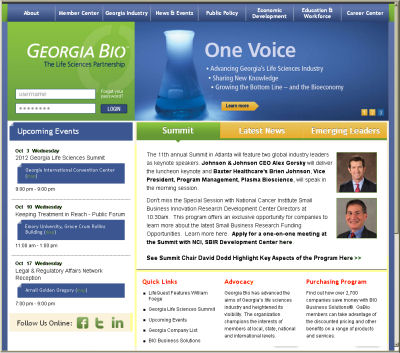In a video deposition shown to jurors Friday, the doctor of a teenager claiming he grew breasts after taking the antipsychotic drug Risperdal said that the boy suffered from severe developmental and behavioral problems, and that he was unaware of possible side effects when he prescribed the medication.

Later, in 2006, Risperdal was approved by the FDA for irritability associated with Autism. By that time, the package insert had been changed to:

and this had been added:

 This patient’s breast development began at age ~12. The picture on the left is a screen capture from a video made by the plaintiff’s lawyer [I don’t know for sure that it is this patient]. When one gets down to the actual patient level, this case becomes more complicated – which always happens in the world called real life. And looking at it from afar, from journal and newspaper articles just add to the confusion, because reports are written by people with opinions.
This patient’s breast development began at age ~12. The picture on the left is a screen capture from a video made by the plaintiff’s lawyer [I don’t know for sure that it is this patient]. When one gets down to the actual patient level, this case becomes more complicated – which always happens in the world called real life. And looking at it from afar, from journal and newspaper articles just add to the confusion, because reports are written by people with opinions.
In Schizophrenia and Mania, antipsychotic medication is used to treat psychosis. And while behavior improves on the medication, it is presumed to be 2º to the absence of hallucinatory and delusional experience. Sedation and emotional blunting are generally seen as side effects. Using these medications in children is something else – the target is behavior itself. They are being used as agents of behavior control for disruptive kids. This is the group originally targeted by Janssen when they tried to enter the child and adolescent market [Double-Blind, Placebo-Controlled Study of Risperidone for the Treatment of Disruptive Behaviors in Children With Subaverage Intelligence].

This was a group whose diagnosis was reframed as the Bipolar Child by Dr. Biederman when that same data was reanalyzed [Risperidone for the treatment of affective symptoms in children with disruptive behavior disorder: a post hoc analysis of data from a 6-week, multicenter, randomized, double-blind, parallel-arm study]. This was the reason that Risperdal was approved for irritability in Autism. And it’s the reason for the various disruptive behavior diagnoses proposed for the DSM-5 Revision. The problem is that the medication often works as in the graph from Aman’s article above. Behavior can be controlled or at least modified. Again, in the disruptive child, the antipsychotic is not treating an underlying disease eg Schizophrenic psychosis, it is behavior that’s in the sights. A further complication – these conditions are often chronic, which means maintenance treatment, magnifying the prospect of adverse effects.
Many parents told 60 Minutes their children are so out of control and disruptive, medication is the only option. A parent who took her children to Biederman’s Mass General clinic, Maria Lamb says she depends on medication for eight-year-old Annie and nine-year-old Casey, who his mother says would rage for hours when he was just two years old. Casey was recently admitted to a psychiatric hospital when he was taken off one of his medications. "I don’t think they would be able to function. I wish they could. It was a last resort, seeing the kind of rages they would have, destroying their room, kicking the door off the hinges," Lamb says. But during one recent visit, Maria’s worried that Annie is eating incessantly. Dr. Biederman’s partner Dr. Janet Wozniak says it could be a side effect from one of Annie’s three medications and suggests another medicine may help.
[reference]
The drug agency sent J&J a warning about its Risperdal marketing practices in 1999. It followed with a stronger warning after the company sent a letter on Nov. 10, 2003, to 700,000 doctors in the U.S. J&J wrote to tell the doctors that the FDA wanted all makers of so-called atypical antipsychotics, including J&J, Pfizer Inc., and Eli Lilly & Co., to warn in product labels of the risk of hyperglycemia and diabetes mellitus. J&J said research “suggests” that Risperdal “is not associated with an increased risk of diabetes” compared with an earlier class of antipsychotics. It also said evidence “suggests” Risperdal is “associated with a lower risk of diabetes than some other studied atypical antipsychotics.”
[reference]
Q. And the subject line is "Competitive Activity"?
A. Yes, it is.
Q. And does this email concern Risperdal and competition from other antipsychotics?
A. Yes, it covers my thoughts around our clinical developments programs.
Q. If we turn to page two of the document, which is a continuation of your email, looking at the third bullet point where you say "While we cannot respond to each and every competitive jab… we should expect that we will be challenged on a number of fronts due to our market position… therefore we need to be proactive in expanding on our strengths [efficacy long and short term, agitation, weight gain, etc] and defending our weak spots [prolactin, QTc, EPS]"… Do you see – did I read that correctly?
A. Yes, you did read that correctly.
Janssen only saw these facts about their product as competative jabs, rather than as adverse effects that could and would occur in their best customers – long term users. There are situations where a child is so out of control that the parents and the clinician are willing to accept these risks. But legitimizing them by making up a disease like the Bipolar Child, or hiding the adverse effects as Janssen did, is not an acceptable way to deal with the problem. Physicians have to consider the risk/benefit equation in every corner of medicine – corticosteroids, immunosuppressives, anti-cancer drugs, toxic antibiotics, narcotics with chronic pain, etc. These situations are never routine. They call for limited usage, careful monitoring, and warnings.
"But the patients that come to me, and the families in tears and despair with these type of problems, I in good faith cannot tell them, ‘Come back in ten years until we have all the data in hand.’ I still need to use medicines that I am assuming that if they work in adults, with appropriate care and supervision, may also work in children."

My comment from your ‘tears and dispair’ post linked in this article:
“..When I saw this post come up in my blogger reader w Rebecca’s photo in it, I knew you have pretty much grasped this enormous, outrageous timeline and tragedy of the bipolar child syndrome and yes some of the parents who eagerly use the drugs as behavior controls, in Rebecca’s case—she was so YOUNG. Her psychiatrist in my opinion was reckless with first do no harm, and she had her medical license restored and is practicing again last I read in a capacity to treat kids in the mental health system–the whole family shot down in a ripple effect of the bipolar child medication paradigm, and Rebecca is truly the innocent victim. There’s another ‘google-able’ child name Destiny who died at age 3 from impacted colon from an antipsychotic.
Thanks again for bringing this into public reading again, no one should ever forget Rebecca Riley.”
Whether it is breast growth from Risperdal or brain damage, diabetes, or death from any psychiatric drugs, the fact remains that children were (sadly) a marketing target for the Big Pharma cos and victims of a regime that was headed by Biederman et al. It is and still remains a well-orchestrated machine with profit at the wheel, the driver is greed, the road meet pavement: the kids.
Risk vs benefit, seemingly so obvious, but obfuscated beyond comprehension in modern medicine. If your child is violent, one would be willing to accept a far higher treatment risk than if a child has minor “attention difficulties”. A no brainer. Yet under the guise of preventative medicine, parents of children with minor issues are led to believe they must accept that risk now based on based on what might (or more likely might not) happen in the future. Of course that risk “might” is always regarding the disorder being treated rather than the treatment itself. This has been an extremely successful business model for pharma for decades.
The pediatric vaccine schedule is the shining example. Healthy children with no immediate medical need are given a pharma product to forestall a disease that might (or more likely might not) occur in the future. The schedule has created a robust and steady multi-billion dollar revenue stream for pharma. It’s the perfect business model, consumers and providers are convinced that the products are *required* as the consequences of not taking the product are just too horrible to consider. Test this thesis by telling your pediatrician you want to skip the polio vaccine for your child. Your pediatrician will freak out. It doesn’t matter that of the 162 polio cases in the US over the last 30 years, 154 were caused by the vaccine itself. Utterly irrelevant they’ll say, we must maintain herd immunity. Now that may be true, but it’s based solely on conjecture. It’s not conjecture that it’s also a great way to keep selling polio vaccines but were told that’s just a happy coincidence for pharma. It’s no surprise they are working feverishly to export this same business model to the rest of their products be they psychotropics, statins, or whatever (more happy coincidences!)
Getting back to the risk aspect, it is also not a coincidence that risk assessment is biased toward the alleged disease/disorder rather than the treatment. We’ve all seen how pharma hides studies with negative outcomes and employs statistical sleight of hand to inflate efficacy. We’ve seen how product risks are fraudulently masked, Vioxx being their crowning glory (Vioxx doesn’t cause heart attacks, their placebo Naproxen prevents them!). We’ve seen the revolving door and conflicts of interest between the regulators (NIH, FDA, CDC) and the regulated (pharma). We’ve seen the growing trend toward “public-private partnerships”, something that used to be called crony capitalism in more honest times. We’ve seen the unholy alliance between the manufacturers, academia, and the regulators. We’ve seen utterly corrupt journals such as the Elsevier empire making sweetheart deals with the drug manufacturers to pimp their products (google “the Australasian journal of bone and joint medicine” for a peak behind the curtain). We’ve seen the coordinated promotion of “key opinion leaders” in pushing off-label drug use. We’ve seen pediatricians contact social services if a child doesn’t get a vaccine. We’ve seen school counselors do the same if you don’t give your child Ritalin. None of this is an accident but a strategy to increase market share. Informed consent is a farce, particularly when it comes to parental rights regarding their children.
The good news is that parents and the public in general are slowly catching on. Unfortunately, it’s not happening fast enough.
Jeff C,
The good news is that parents and the public in general are slowly catching on. Unfortunately, it’s not happening fast enough.
I agree that progress is painfully slow. but I can recall a not-so-long-time-ago when there was no progress at all to speak of. Thanks for your well considered thoughts.
1BOM,
The points about pharma are well taken. However, the profit from the old line vaccine market is limited compared to the profits in medications that are taken daily over extended periods of time. The chronic continuous paradigm, and it’s extension to a wide population of children, is not clearly a direct extension of decades of vaccine work. IBOM, I would not recommend you endorse the conflation of the two. Giving an infant a polio vaccine, or giving that infant months/years of daily risperidone are two very different situations. In terms of profit on the older vaccines (I am not familiar enough with the newer ones, such as HPV, I say that those are not potentially more profitable), a shot costs on the order of cents to a few dollars and is given only a limited number of times – UNESCO’s entire vaccine budget in 2011 was about $780 million spread across multiple drug companies for 10s of millions of kids.
Likening hundreds of antipsychotic doses to the current vaccine regimen is in some ways to do pharma’s work for them in terms of influencing pediatricians. One can be a strong believer in the latter and have grave concerns about the former. Of course, there will be some who can have grave concerns about both, but I would not recommend you support an explicit linkage, even tacitly.
On a different and probably more interesting note, came across this and thought it might be of interest to you if you’d never seen it before. It helped me understand more about Dr. Carroll’s apparent sentiments about the ACNP. These individuals, at least the ones in the interviews, appear more thoughtful and sincere than I would have expected. Rachel Klein’s name appears again in this. I wonder why she’s never spoken up about Study 329. Her statements in the correspondence when participating in 329, and the descriptions of her in these interviews, gives one the impression she is cut from a different cloth than Drs. Keller, Ryan, and Wagner. I don’t know why more of them haven’t added their voices more forcefully and more publically to Dr. Carroll’s and Dr. Frances’.
http://dplnk.psychopharmcurriculum.com/ACNP/50th/Transcripts/VOLUME%20%209_Update.doc
A recent study published in Psychiatric Services found people with serious mental illness (those on disability for schizophrenia or bipolar disorder) dying from cancer at rates far above other Americans.
http://www.medicalnewstoday.com/articles/248101.php
A number of lifestyle factors were cited of course, including smoking. Thus it was tragic, but hardly shocking, to hear that people with serious mental illness had over four times the risk of lung cancer as the rest of us.
However, the figure that did shock was this: Women with serious mental illness have three times the breast cancer risk of American women overall. This can’t be due to smoking, as there seems to be no established link between smoking and breast cancer. It was mentioned that the seriously mentally ill are much more likely to be childless — but having no children, or postponing childbearing into your thirties, elevates your breast cancer risk only “slightly” according to the American Cancer Society. So what’s going on?
The most likely culprit, I think, is prolactin — and the source of all that prolactin would be the atypical antipsychotics to which just about every patient in America has been switched in the past twenty years. If this is so, it’s very scary … already the average American woman’s lifetime risk of breast cancer is one in eight. So these women would .have a better than one in three risk — and as a group they get piss-poor healthcare with few screening exams.
My other concern is the young girls being put on these drugs as early as four years old. How is it going to disrupt their hormonal development, and what is their breast cancer risk going to look like? As serious as the questions around “man boobs” on adolescent boys are — and that is a very serious question — it seems to me like the effects on girls and women could be even more catastrophic. Dr. BOM, am I right?
Johanna,
That’s a great point that I’ve not thought about myself. It’s important enough to send to RxISK, Dr. Healy’s site. It’s mentioned in the package insert but not in the way that would capture attention:
Thanks for sending it…
Arriving at the end of this post and the reference to J&J’s new CEO, I wondered, after seeing his headshot, (I’ve been re-reading Fowler’s Phrenology texts), whether he had come up through finance or marketing – I “knew” he was neither scientist nor clinician. Marketing. (a Wharton MBA after West Point & 6 years active duty during which he made O-3 and earned a “Ranger tab and Airborne wings”).
Foxes been taking over the henhouse while the professionals been asleep at the switch. Shades of Monica Goodling.